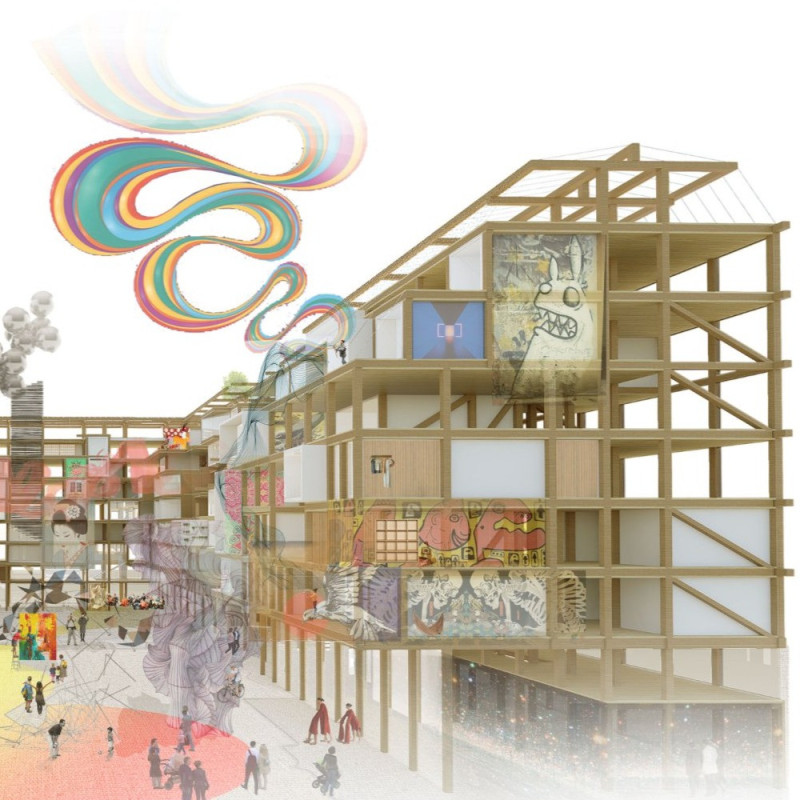5 key facts about this project
The design is located in Berlin, where it aims to integrate residential living with community spaces. The main idea focuses on creating an "agora," a lively area that supports cultural diversity and encourages personal expression. This approach fosters a sense of belonging among residents, allowing them to interact with one another in meaningful ways.
STRUCTURAL FRAMEWORK
The project uses a foundational structure called "the skeleton." This framework provides the essential support for the building and serves as the main pathway for movement within the space. By being fixed in place, the skeleton allows flexibility for the layout of individual living areas. Residents can adjust their spaces according to their own preferences and needs, ensuring a responsive design that reflects the diversity of its users.
URBAN ENVELOPE
An important feature of the design is the urban envelope, which connects the building to its surroundings. This element opens up opportunities for interaction between residents and the public. It creates a flow between inside and outside, making communal areas easily accessible. The design includes spaces such as galleries and coworking areas to encourage creative collaboration and social interaction within the community.
MATERIAL SELECTION
Wood is the main material used in the construction. This choice highlights a focus on being environmentally friendly. Wood has a long history in Berlin, and its use adds to the warmth and texture of the living spaces. By incorporating wood, the design fosters a welcoming atmosphere that enhances the quality of life for the residents.
ADAPTABILITY AND COMMUNITY INTEGRATION
Adaptability is a key aspect of the design, allowing residents to personalize their living units. This flexibility promotes a strong sense of ownership and community. By moving away from traditional classifications of housing, the design encourages a broader understanding of "general housing" that values the inhabitants and their connections to one another.
In this setting, each living unit allows for personal touches, making it more than just a place to live. It becomes a space where individuals can express their identities and contribute to a vibrant community.



















































